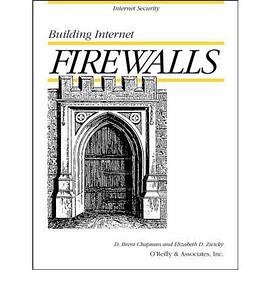

<p><font face="Verdana">More than a million systems are now connected to the Internet, and something like 15 million people in 100 countries on all seven continents use Internet services. More than 100 million email messages are exchanged each day, along with countless files, documents, and audio and video images.<p>Everyone is jumping on the Internet bandwagon. Once a haven for academicians and scientists, the Net is now reaching large and small businesses, government at all levels, school children, and senior citizens. The commercial world is rushing headlong into doing business on the Internet, barely pausing while technologies and policies catch up with their desire to go online. But, too few of the seekers after Internet wisdom and riches consider whether their businesses will be safe on the Net.<p>What kinds of security risks are posed by the Internet? Some risks have been around since the early days of networking -- password attacks (guessing them or cracking them via password dictionaries and cracking programs), denial of service, and exploiting known security holes. Some risks are newer and even more dangerous -- packet sniffers, IP (Internet Protocol) forgery, and various types of hijacking attacks. <p>Firewalls are a very effective way to protect your system from these Internet security threats. Firewalls in computer networks keep damage on one part of the network (e.g., eavesdropping, a worm program, file damage) from spreading to the rest of the network. Without firewalls, network security problems can rage out of control, dragging more and more systems down. <p>What is a firewall? It's a hardware and/or software solution that restricts access from your internal network to the Internet -- and vice versa. A firewall may also be used to separate two or more parts of your local network (for example, protecting finance from R&D). The firewall is installed at the perimeter of the network, ordinarily where it connects to the Internet. You can think of a firewall as a checkpoint; all traffic, incoming and outgoing, is stopped at this point. Because it is, the firewall can make sure that it is acceptable. "Acceptable" means that whatever is passing through -- email, file transfers, remote logins, NFS mounts, etc. -- conforms to the security policy of the site. <p><i>Building Internet Firewalls</i> is a practical guide to building firewalls on the Internet. If your site is connected to the Internet, or if you're considering getting connected, you need this book. It describes a variety of firewall approaches and architectures and discusses how you can build packet filtering and proxying solutions at your site. It also contains a full discussion of how to configure Internet services (e.g., FTP, SMTP, Telnet) to work with a firewall. The book also includes a complete list of resources, including the location of many publicly available firewall construction tools. <p>The book is divided into four parts:<p>Part I discusses Internet threats, the benefits of firewalls, overall security strategies, and a summary of Internet services and their security risks. <p>Part II describes possible firewall designs and general terms and concepts, how to protect the bastion host in your firewall configuration, how to build proxying and packet filtering firewalls, and how to configure Internet services to operate with a firewall.<p>Part III describes how to maintain a firewall, develop a security policy, and respond to a security incident.<p>Part IV contains appendices consisting of a resource summary, a directory of how to find firewall toolkits and other security-related tools, and a detailed summary providing TCP/IP background information.</font></p>
具體描述
讀後感
用戶評價
相關圖書
本站所有內容均為互聯網搜索引擎提供的公開搜索信息,本站不存儲任何數據與內容,任何內容與數據均與本站無關,如有需要請聯繫相關搜索引擎包括但不限於百度,google,bing,sogou 等
© 2025 onlinetoolsland.com All Rights Reserved. 本本书屋 版权所有




















